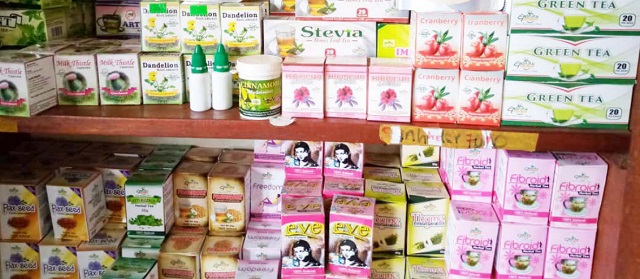
Makerere University scientists give traditionalists a boost
| THE INDEPENDENT | An organic research group at Makerere University Kampala has embarked on testing the safety, quality and efficacy of herbal remedies in a bid to ensure that only those found safe and effective are used.
The group from the university’s Department of Chemistry is led by Prof. Robert Byamukama.
According to a member of the group, Jane Namukobe, a lecturer in the department who is affiliated to the international network of natural products research scientists in East and Central Africa (NAPRECA), the group works closely with the herbalists and their communities.
NAPRECA branches are currently in Botswana, Cameroon, DR Congo, Egypt, Ethiopia, Kenya, Madagascar, Sudan, Rwanda, Tanzania, Uganda and Zimbabwe. The network is coordinated by Byamukama.
The network tries to discover useful chemical principles that can be applied in human and animal health as well as agrochemicals in the region in conjunction with the rest of the world.
Other scientists on the team are Peter Sekandi, Moses Murungi, Jennifer Nambooze, Yeremiah Ekyibetenga, Christine Betty Nagawa and Savina Asiimwe.
The scientists focus, however, is on testing the safety, quality and efficacy of herbal remedies. In one study in Uganda, they evaluated the antibacterial, antioxidant, and sun protection potential of Spermacoce princeae (locally called Kisakimu), Psorospermum febrifugum (Akanzirinziro), Plectranthus caespitosus (kibwankulata), and Erlangea tomentosa (Ekyoganyanja) extracts against traumatic burns and skin infections. The plant extracts showed good antibacterial activity against the tested bacterial strains such as Pseudomonas aeruginosa, Staphylococcus aureus, Escherichia coli, Klebsiella pneumonie, Streptococcus pyogenes, and Salmonella typhi. The researchers concluded that the plants are alternative sources of antibacterial, antioxidant, and sun protection agents in managing bacterial skin infections.
Positive findings
According to Namukobe, the scientists say some of the plants they tested proved to be very safe and effective as skin antibacterials and sunscreens. Using these findings, they have formulated herbal cosmetics – soap, jelly and cream. They have gone ahead and trained people in Mpigi, Kamuli, Kayunga and Buikwe districts to formulate herbal cosmetics (sunscreens and skin creams) they can use safely and sell.
They have shared this formulation with the communities they consulted, so they can make their own products and use them knowing they are scientifically sound. They plan to share the formulation more widely.
“We’ll also be doing further tests on the formulated products – a step, we hope, towards bringing it in line with international standards so that these African plants can step onto the world stage,” Namukobe says.
A thorough process
According to an article that Namukobe published in the online journal `The Conversation’, their latest research examined how medicinal plants commonly used in Uganda might be used to treat various skin infections.
The first step was to consult with herbalists and communities to learn what plants, or parts of plants, are used for these sorts of ailments. They identified Spermacoce princeae, Psorospermum febrifugum, Plectranthus caespitosus, and Erlangea tomentosa.
They then collected the plants, either early in the morning or late in the evening. That’s because the plants’ chemical components are in their most natural state during these times. During the day when the sunshine is at its peak, some active chemicals can either evaporate or can be exchanged for inactive ones.
The plant parts were then taken to the research facility and dried under shade to prevent the loss of any chemical components that can escape into the atmosphere in sunshine. Shade drying also prevents active components from degrading into an inactive state.
Next, dried plant material was ground into fine powder and extracted using water and organic solvents to obtain the active components. The resultant liquid was filtered to remove any solid material, then dried so it can be thoroughly tested for efficacy and toxicity, and its chemical components analysed. By identifying the chemical components, we were able to ascertain which chemicals were responsible for a plant’s effectiveness as a treatment. Their findings are published in the journal of `Tropical Medicine and Health’ volume 49. Their article is titled `Antibacterial, antioxidant, and sun protection potential of selected ethno medicinal plants used for skin infections in Uganda’.
 The Independent Uganda: You get the Truth we Pay the Price
The Independent Uganda: You get the Truth we Pay the Price



